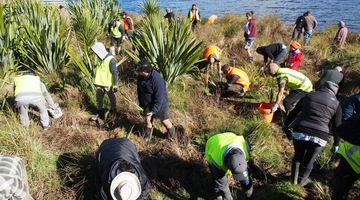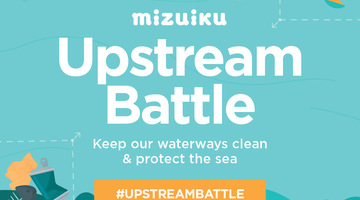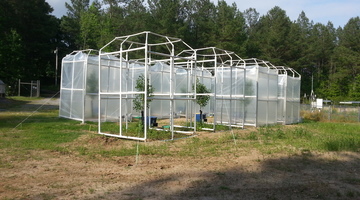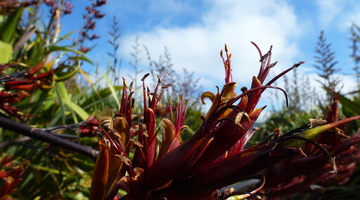

New research details the history of raupō from the time before people arrived in Aotearoa. It shows this resilient, opportunistic plant – and taonga species – can play an important role restoring ...
READ MORE

The ecology of the river refers to the relationships that living organisms have with each other and with their environment – the ecosystem. An ecosystem is the sum of interactions between plants ...
READ MORE

Our freshwater native fish like to keep their cool. They’re used to shaded waterways lined with dense vegetation because over 80% of New Zealand was once forested. Stream work for fish is ...
READ MORE

Observation forms the basis of both mātauranga Māori and science. Possibly the most powerful model of inspiration that we can draw from our ancestors is that of careful, purposeful care and ...
READ MORE

Kōura (freshwater crayfish) are a taonga species for Māori, a keystone species for ecosystem dynamics and an indicator species for ecosystem health. They are also a species that have been ...
READ MORE

Repo (wetlands) are rich in biodiversity. They are the ‘in between’ places that connect the water with the land, providing habitats for native plants, invertebrates, fish and birds. Repo are also ...
READ MORE

Did you know that 80% of marine litter globally starts life on land? Mizuiku Upstream Battle is a citizen science programme run by Keep New Zealand Beautiful. It aims to get volunteers across ...
READ MORE

By comparing some features of fossilised plants with the same features of plants living today, scientists hope to be able to learn more about the effect of changing carbon dioxide (CO2) levels in ...
READ MORE

iNaturalist logs hundreds of thousands of photos of flora, fauna and fungi. There are even sound recordings too. Each is described and geo located. iNaturalist is used by citizens and scientists ...
READ MORE

In ecological terms, wetlands are ecotones – transitional habitats between terrestrial and aquatic ecosystems. They provide a mixture of habitats and are capable of supporting a diverse range of ...
READ MORE

In this recorded professional learning session, Greta Dromgool shares the mahi from a collaboration between Manaaki Whenua – Landcare Research and Pokapū Akoranga Pūtaiao – The Science Learning ...
READ MORE

Students investigate silage production and test a stream to see if run-off from silage is polluting it. Students then produce a pamphlet of their findings to educate the community. Purpose To ...
READ MORE
Researcher Cheri van Schravendijk-Goodman explains why some plants are considered pest plants within the Waikato River catchment. These plants invade the catchment area and often compete with ...
READ MORE
Wetlands, known as repo in te reo Māori, are threatened ecosystems in Aotearoa New Zealand. Repo experts provide an introduction to the value of wetlands. Questions for discussion: What are some ...
READ MORE
Freshwater repo – marshes, fens, swamps and bogs – have unique characteristics. Plant ecologist and repo expert Bev Clarkson tells us how hydrology, nutrients and gumboots provide clues to ...
READ MORE

Wetland ecosystems hold significant environmental and cultural value in Aotearoa. Learning about these values and the steps we can take to protect and uphold the values are suited to inquiry ...
READ MORE

This slideshow, from the webinar Te Repo – wetlands as a context for learning, provides additional support for the video tutorial. Use the Slideshow menu for further options, including view full ...
READ MORE

View ecosystem connections with a te ao Māori perspective. Click on the labels for more information. Select here to view the full transcript and copyright information.
READ MORE